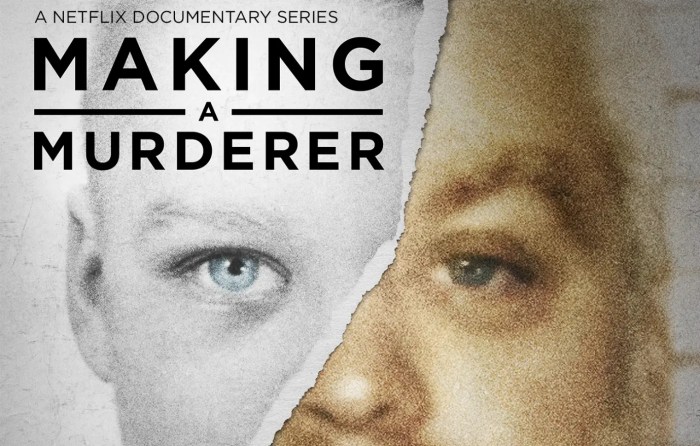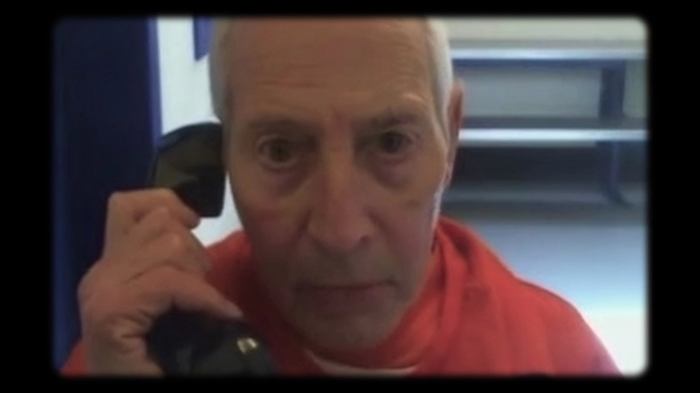
True crime documentaries have become a cultural phenomenon, drawing viewers into the depths of real-life mysteries and often chilling narratives. These captivating films not only entertain but also delve into the complexities of human behavior and societal impacts surrounding infamous crimes.
The genre has witnessed an explosion in popularity, particularly over the last decade, as filmmakers employ innovative storytelling techniques to engage audiences. From compelling interviews with those affected by crime to in-depth analyses of psychological profiles, true crime documentaries offer a unique window into the darker aspects of human nature.
Popular True Crime Documentaries
The genre of true crime documentaries has surged in popularity over the past decade, capturing the public’s imagination with real-life stories of crime, justice, and the human experience. These documentaries not only recount heinous acts but also explore the societal implications and moral questions they raise. In this exploration, we will look at three standout documentaries that have made significant cultural impacts and examine their unique storytelling techniques.
Top Three True Crime Documentaries
The following documentaries have not only captivated audiences but also sparked conversations around justice, morality, and societal issues. Each film approaches storytelling in distinct ways, enhancing the viewer’s engagement and understanding of the cases.
- Making a Murderer (2015): This groundbreaking series follows the story of Steven Avery, a man wrongfully convicted of sexual assault and later accused of murder. The film’s narrative structure intertwines real footage with interviews and courtroom drama, creating a sense of urgency and suspense. The impact of this case has led to widespread discussions about police misconduct and the flaws within the justice system.
- The Jinx: The Life and Deaths of Robert Durst (2015): This miniseries chronicles the life of real estate heir Robert Durst, a prime suspect in multiple murders. Through a combination of retrospective interviews and on-the-ground reporting, the documentary builds a psychological profile of Durst, revealing unsettling truths. The series culminates in a shocking finale that reshapes the audience’s perception of guilt and innocence.
- Wild Wild Country (2018): This documentary delves into the controversial Indian guru Bhagwan Shree Rajneesh and his community in Oregon. Using a mix of archival footage and firsthand accounts, it explores themes of cult behavior, power, and community conflict. The societal impact is profound, as it raises questions about freedom of belief and the consequences of unchecked authority.
Unique Storytelling Techniques
These documentaries employ innovative storytelling techniques that enhance emotional engagement and provide depth to the narratives. By utilizing various mediums and perspectives, they create a compelling viewing experience.
- First-Person Narratives: Many true crime documentaries utilize the voices of those directly involved, providing an intimate look at the events. This technique allows viewers to connect on a personal level with the stories being told.
- Non-Linear Storytelling: Documentaries like “The Jinx” employ non-linear storytelling, weaving together past and present events to create suspense and intrigue. This method keeps viewers on the edge of their seats as they piece together the narrative.
- Visual Aids and Animation: To illustrate complex events or timelines, some documentaries incorporate visual aids and animation. This helps to clarify intricate details and maintain viewer interest while enriching the narrative context.
Insights into Real-Life Cases
The real-life cases depicted in these documentaries have had lasting effects on society, bringing attention to critical issues within the criminal justice system and broader societal norms.
- Making a Murderer: The documentary has led to a renewed scrutiny of wrongful convictions, prompting discussions about the need for reform in legal practices and greater oversight of law enforcement agencies.
- The Jinx: Following its release, the documentary reignited interest in cold cases and the role of media in shaping public perception of guilt. It highlighted the ethical responsibilities of filmmakers in portraying such sensitive subjects.
- Wild Wild Country: This series brought awareness to the challenges of religious freedom versus public safety. It sparked conversations about the balance between individual rights and community welfare, showing how cults can influence societal dynamics.
Psychological Aspects of True Crime

True crime documentaries delve deep into the minds of criminals, offering a rich exploration of psychological profiles that define their behaviors. These stories often reveal complex motivations fueled by a myriad of factors, including upbringing, societal influences, and mental health issues. Understanding these aspects not only enhances the viewer’s experience but also sheds light on broader societal implications.The psychological profiles commonly portrayed in these documentaries often include elements such as antisocial personality disorder, narcissism, and other maladaptive traits.
Documentaries like “The Ted Bundy Tapes” and “Mindhunter” provide valuable insights into the minds of notorious criminals, illustrating how their psychological makeup contributes to their heinous actions.
Psychological Profiles of Criminals
The exploration of psychological profiles reveals a significant correlation between mental health disorders and criminal behavior. Some of the most common profiles depicted in true crime stories include:
- Antisocial Personality Disorder (ASPD): Individuals with ASPD often exhibit a lack of empathy and remorse, leading to manipulative and harmful behaviors. Notorious criminals such as Ted Bundy and John Wayne Gacy display traits consistent with this disorder.
- Narcissistic Personality Disorder: This profile is characterized by a grand sense of self-importance and a need for admiration. High-profile criminals like Jim Jones demonstrate how narcissism can drive individuals to commit extreme acts to maintain control and attention.
- Borderline Personality Disorder: Some criminals exhibit unstable relationships and intense emotional responses, contributing to impulsive and often violent behaviors. Documentaries often highlight cases like that of Aileen Wuornos, who struggled with this disorder.
Motivations Behind Criminal Behaviors
True crime documentaries analyze various motivations behind criminal behaviors, revealing a spectrum of factors that drive individuals to commit crimes. These motivations can be categorized as follows:
- Environmental Influences: Socioeconomic factors, childhood trauma, and exposure to violence can significantly impact behavior. For instance, many serial killers come from difficult backgrounds that influence their actions.
- Psychological Needs: Some individuals commit crimes to fulfill deep-seated psychological needs, such as the desire for power, control, or validation. The motives of famous criminals like Charles Manson, who sought to establish a cult-like following, exemplify this aspect.
- Substance Abuse: Addiction can exacerbate underlying psychological issues, leading to criminal behavior. Documentaries often present cases where addiction is a central theme contributing to a crime spree.
Portrayal of Criminals in Documentaries Versus Fictional Media
The representation of criminals in true crime documentaries differs significantly from their portrayal in fictional media, such as movies and television series. Documentaries aim for factual accuracy, providing a more nuanced view of the criminal’s psyche and the circumstances surrounding their actions. In contrast, fictional media often dramatizes characters for entertainment value, leading to exaggerated traits and archetypes. For instance, while documentaries focus on the psychological complexity and reality of a criminal’s life, fictional portrayals may lean towards sensationalism, making them appear more villainous or larger-than-life.
The impact of these portrayals influences public perception, shaping how society views criminal psychology and the factors contributing to such behaviors.
Understanding the psychological aspects of crime not only aids in the comprehension of criminal behavior but also fosters a deeper societal dialogue regarding mental health and its implications.
True Crime Documentary Production

Producing a true crime documentary is a multi-faceted process that transforms chilling real-life events into compelling narratives. This journey from concept to release requires meticulous planning, careful storytelling, and a respectful approach toward sensitive topics. The production process involves various stages, including research, pre-production, filming, and post-production, each critical to creating an impactful documentary.
Steps in Producing a True Crime Documentary
Understanding the individual steps involved in producing a true crime documentary can streamline the entire process and ensure that every narrative element is accounted for. Here’s a breakdown of the key stages:
- Research and Development: This initial phase involves extensive research to identify a compelling story, gathering facts, legal considerations, and identifying potential interview subjects.
- Pre-Production Planning: In this stage, the production team plans the logistics, secures funding, hires crew members, and develops a shooting schedule.
- Script Development: Crafting a script that Artikels the narrative structure, key interviews, and overall tone is crucial at this stage.
- Filming: Actual production begins with filming interviews, reenactments, and gathering supporting footage to enrich the narrative.
- Post-Production: Editing, sound design, and incorporating graphics occur here, culminating in a polished documentary ready for distribution.
- Distribution: The final step involves releasing the documentary through various platforms, including film festivals, television, or streaming services.
Conducting Interviews with Victims’ Families and Law Enforcement
Interviewing individuals who have been affected by crime requires sensitivity and professionalism. Establishing trust and ensuring a respectful atmosphere can lead to deeper insights and a more authentic representation of the story.
Building rapport is essential when interviewing subjects from sensitive backgrounds.
Key strategies include:
- Preparation: Research the individual’s background and the circumstances surrounding the case to foster a knowledgeable conversation.
- Creating a Safe Space: Ensure the interview setting is comfortable and private, allowing subjects to express themselves freely.
- Empathy and Sensitivity: Approach topics with care, acknowledging the emotional weight of the subject matter and allowing time for responses.
- Open-Ended Questions: Use open-ended questions to encourage detailed storytelling, providing subjects the freedom to share their experiences.
Effective Scripting and Storytelling in True Crime Narratives
Crafting a compelling narrative requires a careful balance of factual accuracy and engaging storytelling. A well-structured script can guide the audience through the emotional landscape of the story.
Effective storytelling in true crime combines factual reporting with emotional resonance.
Essential elements for effective scripting include:
- Character Development: Introduce key figures in the story, providing background and context to create emotional engagement.
- Conflict and Resolution: Highlight the central conflict of the crime and the pursuit of justice, establishing stakes that captivate the audience.
- Pacing: Maintain a dynamic pacing that balances tension with moments of reflection to enhance viewer engagement.
- Visual Storytelling: Complement the narrative with striking visuals, including archival footage, photographs, and reenactments to enrich the viewer’s experience.
End of Discussion

In conclusion, the world of true crime documentaries serves as a haunting reflection of our society and the psychology behind criminal behavior. By exploring the real cases, production techniques, and the motivations that drive both criminals and audiences, we gain a deeper understanding of these captivating narratives that blur the lines between fact and fiction.
Frequently Asked Questions
What makes true crime documentaries so popular?
Viewers are drawn to the thrill of real-life mysteries, the complexity of human psychology, and the emotional engagement that comes from understanding real victims and their stories.
How do filmmakers research for true crime documentaries?
Filmmakers typically utilize public records, interviews with experts, and first-hand accounts from victims’ families and law enforcement to gather information.
Are true crime documentaries scripted?
While they are based on real events, true crime documentaries often include scripted elements for narrative flow, but they strive to maintain factual accuracy.
What are some ethical concerns surrounding true crime documentaries?
Ethical concerns include the potential for sensationalism, the impact on victims’ families, and the risk of glorifying criminals.
How do true crime documentaries differ from fictional crime stories?
True crime documentaries focus on real events and people, often providing insights into the psychological aspects of crime, while fictional stories prioritize entertainment and dramatic narratives.






